Introduction
Notice to users
Errata
Interpretations
Patents
Contents
1. Overview
1.2 Scope
1.3 Purpose
3. Definitions
4. Acronyms and abbreviations
5. General description
5.1 Introduction
5.4 Architecture
5.4.1 Physical layer (PHY)
5.5 Functional overview
5.5.1 Superframe structure
5.5.2 Data transfer model
5.5.4 Improving probability of successful delivery
5.5.5 Power consumption considerations
5.5.6 Security
5.5.7 General overview of ranging
5.5.8 Management of UWB options
6. PHY specification
6.1 General requirements and definitions
6.1.1 Operating frequency range
6.1.2 Channel assignments
6.1.3 Minimum long interframe spacing (LIFS) and short interframe spacing (SIFS) periods
6.1.5 Transmit power
6.2 PHY service specifications
6.2.1 PHY data service
6.2.2 PHY management service
6.2.3 PHY enumerations description
6.3 PPDU format
6.3.1 Preamble field
6.3.2 SFD field
6.4 PHY constants and PIB attributes
6.4.2 PIB Attributes
6.5 2450 MHz PHY specifications
6.5a 2450 MHz PHY chirp spread spectrum (CSS) PHY
6.5a.1 Data rates
6.5a.2 Modulation and spreading
6.5a.3 CSS frame format
6.5a.4 Waveform and subchirp sequences
6.5a.5 2450 MHz band CSS radio specification
6.8 868/915 MHz band (optional) O-QPSK PHY specification
6.8a UWB PHY specification
6.8a.1 UWB frame format
6.8a.2 PPDU encoding process
6.8a.3 UWB PHY symbol structure
6.8a.4 PSDU timing parameters
6.8a.5 Preamble timing parameters
6.8a.6 SHR preamble
6.8a.7 PHY header (PHR)
6.8a.8 Data field
6.8a.9 UWB PHY modulation
6.8a.10 UWB PHY forward error correction (FEC)
6.8a.11 PMD operating specifications
6.8a.12 Transmitter specification
6.8a.13 UWB PHY optional pulse shapes
6.8a.14 Extended preamble for optional UWB CCA mode
6.8a.15 Ranging
6.9 General radio specifications
6.9.1 TX-to-RX turnaround time
6.9.3 Error-vector magnitude (EVM) definition
6.9.4 Transmit center frequency tolerance
6.9.5 Transmit power
6.9.6 Receiver maximum input level of desired signal
6.9.7 Receiver ED
6.9.9 CCA
7. MAC sublayer specification
7.1 MAC sublayer service specification
7.1.1 MAC data service
7.1.2 MAC management service
7.1.5 Beacon notification primitive
7.1.10 Primitives for specifying the receiver enable time
7.1.11 Primitives for channel scanning
7.1.16 Primitives for requesting data from a coordinator
7.1.16a Primitives for specifying dynamic preamble (for UWB PHYs)
7.1.16b Primitives for channel sounding (for UWB PHYs)
7.1.16c Primitives for ranging calibration (for UWB PHYs)
7.1.17 MAC enumeration description
7.4 MAC constants and PIB attributes
7.4.2 MAC PIB attributes
7.5 MAC functional description
7.5.2 Starting and maintaining PANs
7.5.7 GTS allocation and management
7.5.7a Ranging
Annex D (normative) Protocol implementation conformance statement (PICS) proforma
D.1 Introduction
D.5 Identification of the protocol
D.7 PICS proforma tables
Annex D1 (informative) Location topics
D1.1 Overview
D1.2 Time-of-arrival estimation from channel sounding
D1.3 Asynchronous ranging
D1.4 Location estimation from range data
D1.5 Network location algorithms
Annex E (informative) Coexistence with other IEEE standards and proposed standards
E.1 Introduction
E.2 Standards and proposed standards characterized for coexistence
E.3 General coexistence issues
E.4 2400 MHz band coexistence performance (except for CSS PHYs)
E.5 800/900 MHz bands coexistence performance
E.6 2400 MHz band coexistence performance for CSS PHYs
E.7 UWB coexistence performance
E.8 E.6Notes on the calculations
Annex F (informative) IEEE 802.15.4 rRegulatory requirements
F.1 IEEE Std 802.15.4
F.2 IEEE 802.15.4a UWB
Annex H (informative) UWB PHY optional chaotic pulses
Annex I (informative) Example UWB PHY transmit data frame encoding
I.1 Channel used in the example
I.2 Encoding progression
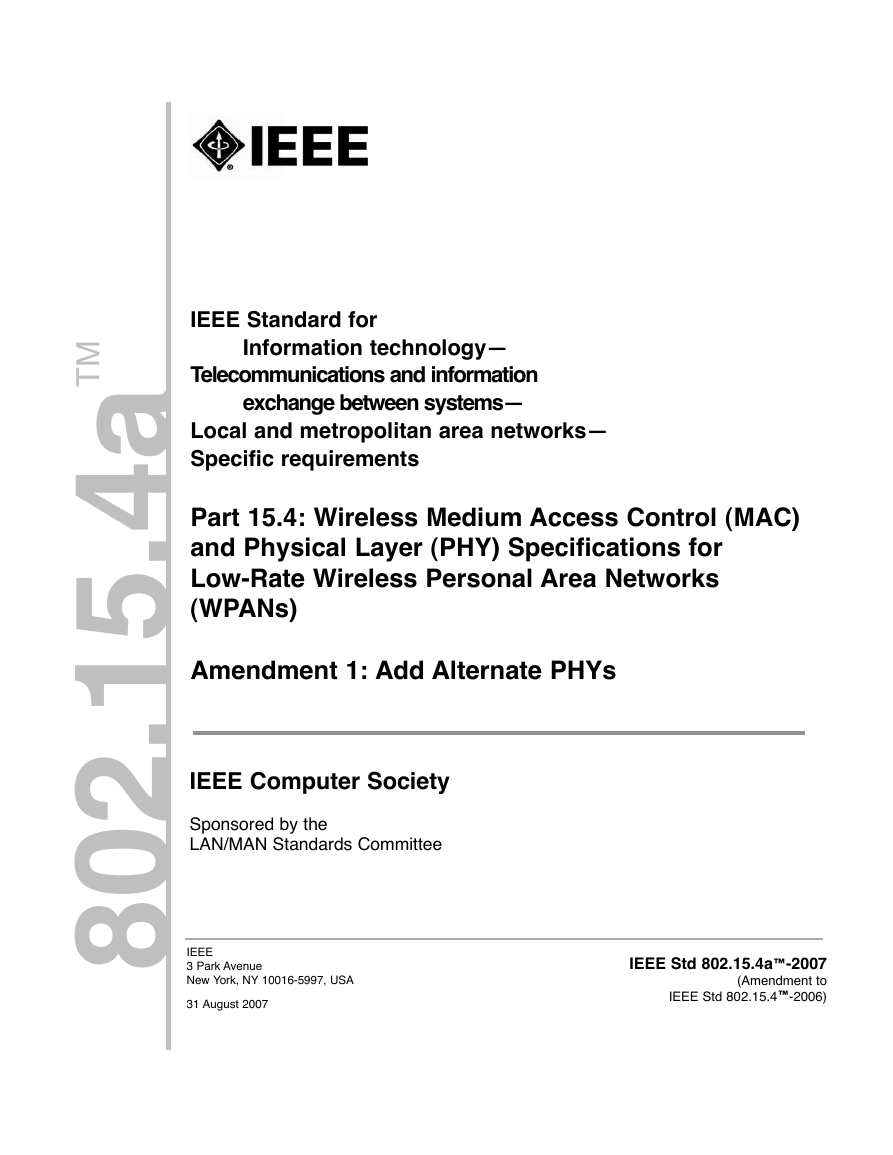

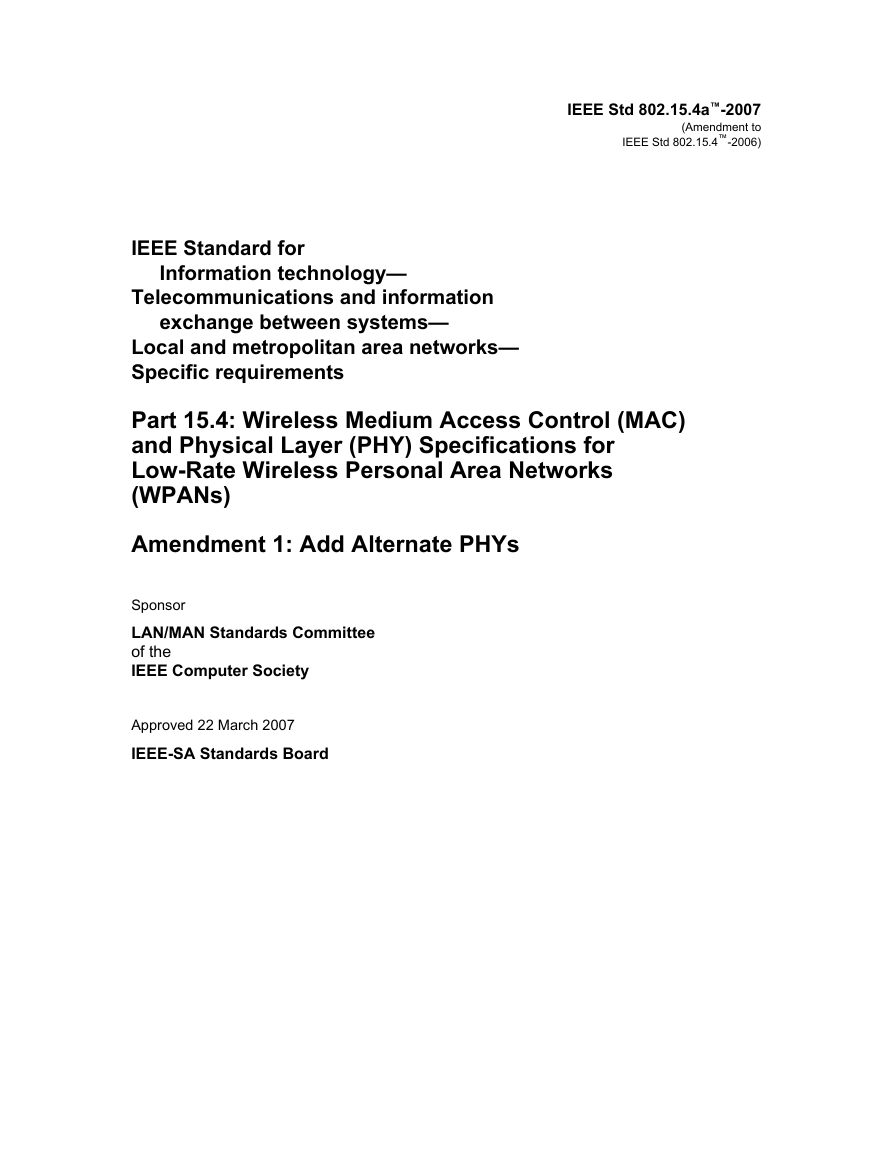
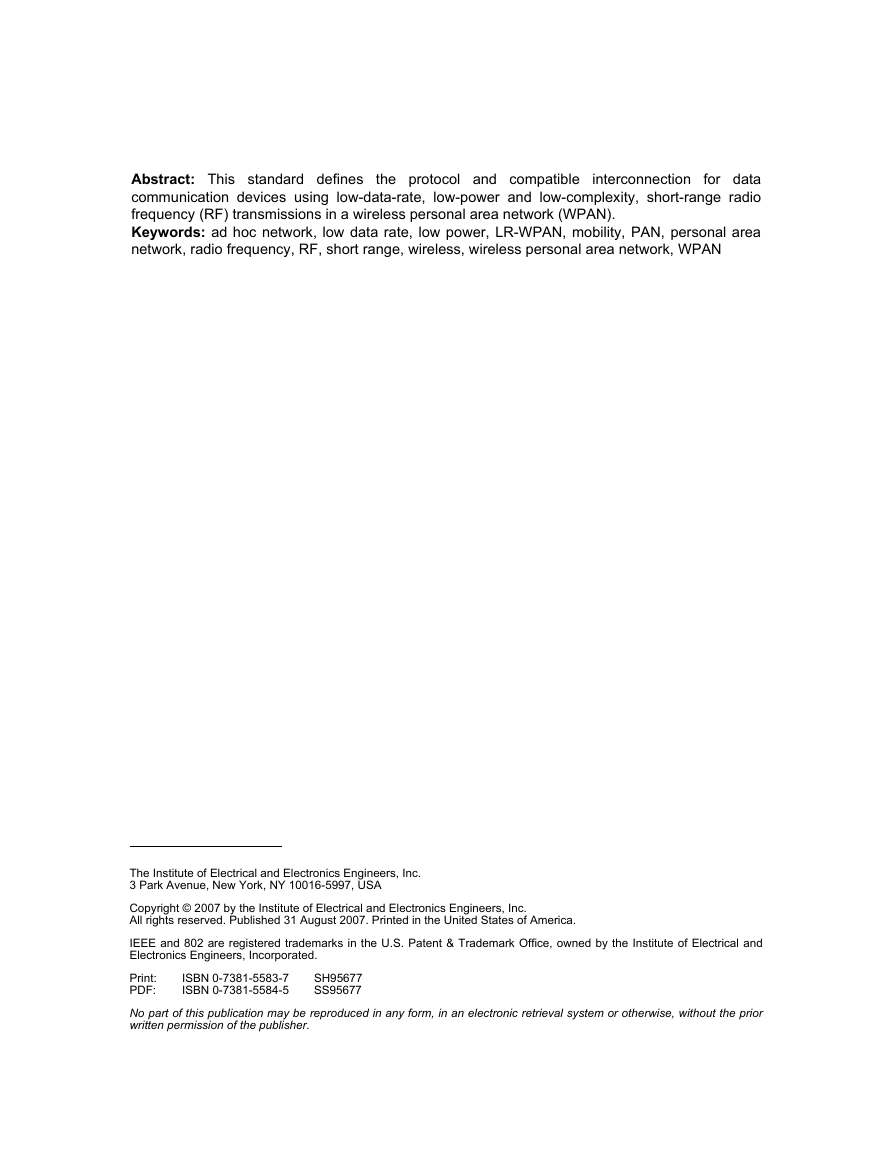
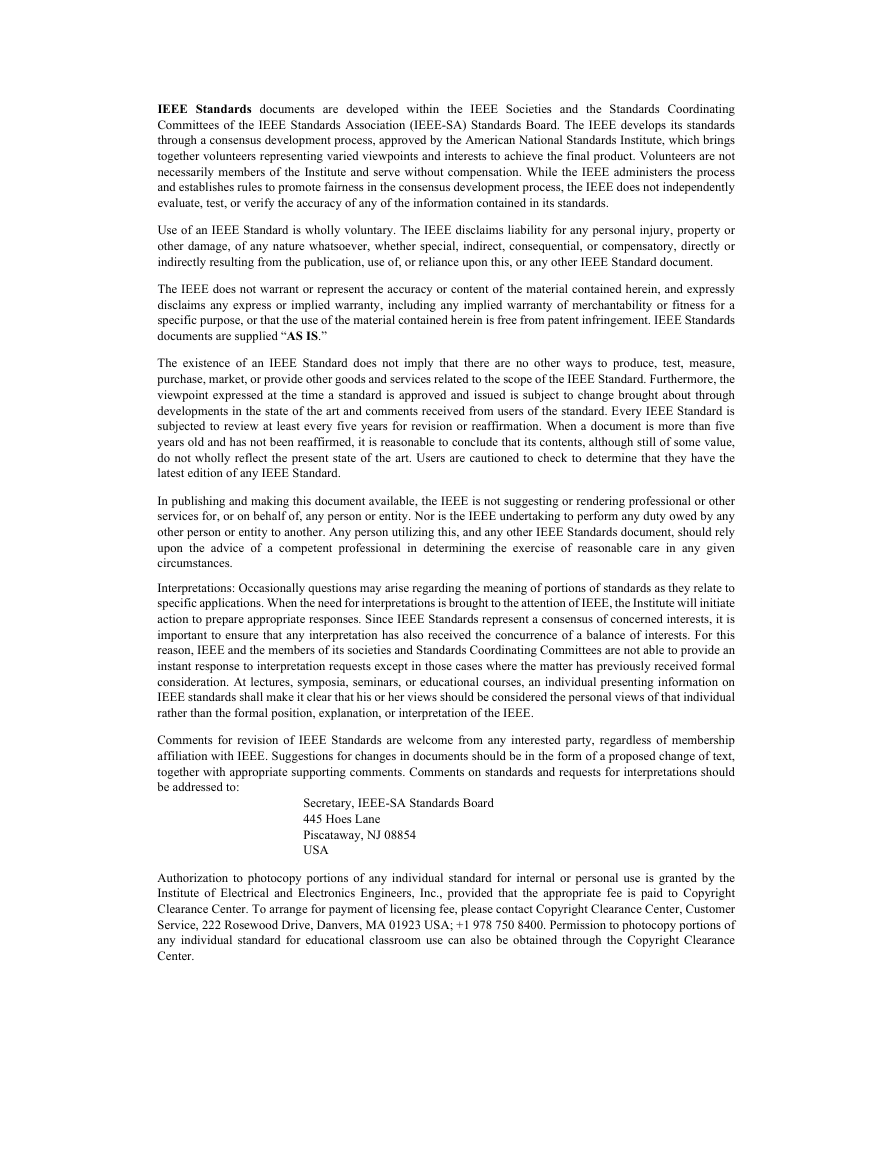
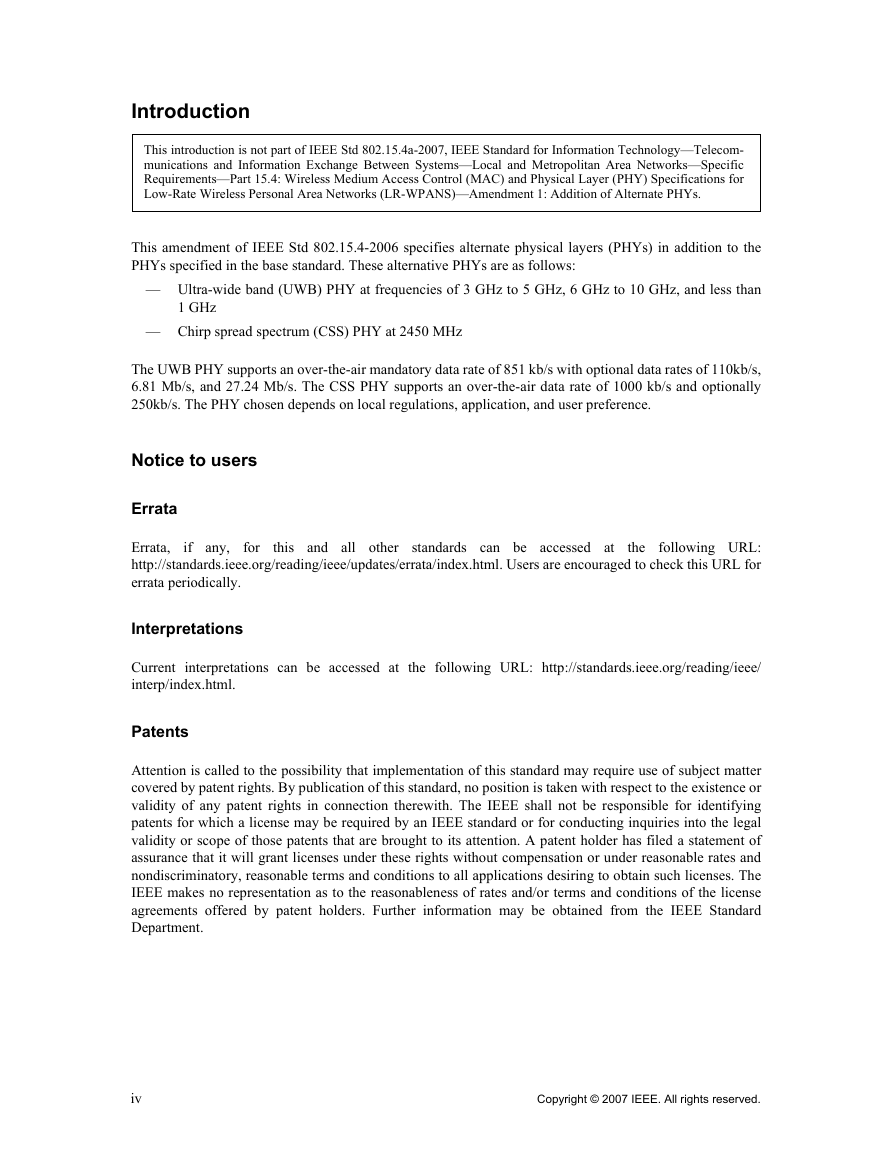

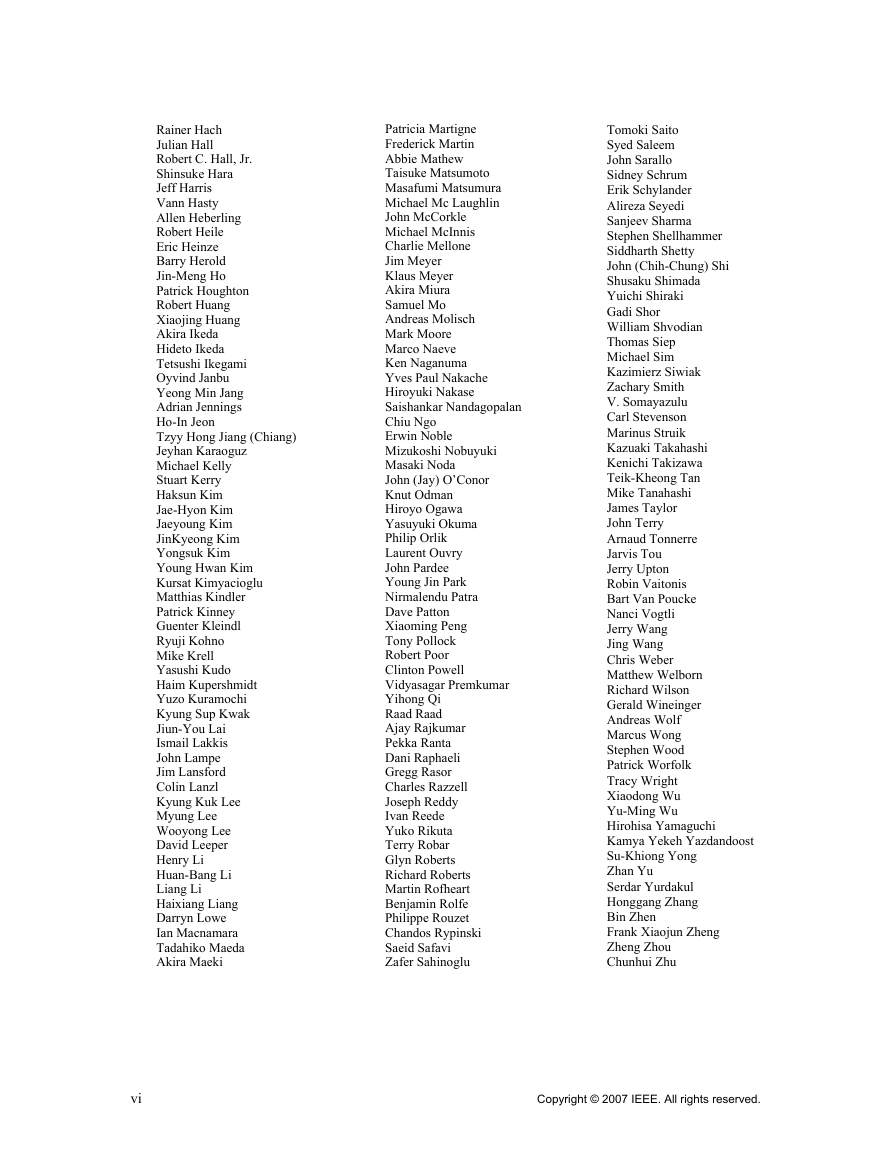








 2023年江西萍乡中考道德与法治真题及答案.doc
2023年江西萍乡中考道德与法治真题及答案.doc 2012年重庆南川中考生物真题及答案.doc
2012年重庆南川中考生物真题及答案.doc 2013年江西师范大学地理学综合及文艺理论基础考研真题.doc
2013年江西师范大学地理学综合及文艺理论基础考研真题.doc 2020年四川甘孜小升初语文真题及答案I卷.doc
2020年四川甘孜小升初语文真题及答案I卷.doc 2020年注册岩土工程师专业基础考试真题及答案.doc
2020年注册岩土工程师专业基础考试真题及答案.doc 2023-2024学年福建省厦门市九年级上学期数学月考试题及答案.doc
2023-2024学年福建省厦门市九年级上学期数学月考试题及答案.doc 2021-2022学年辽宁省沈阳市大东区九年级上学期语文期末试题及答案.doc
2021-2022学年辽宁省沈阳市大东区九年级上学期语文期末试题及答案.doc 2022-2023学年北京东城区初三第一学期物理期末试卷及答案.doc
2022-2023学年北京东城区初三第一学期物理期末试卷及答案.doc 2018上半年江西教师资格初中地理学科知识与教学能力真题及答案.doc
2018上半年江西教师资格初中地理学科知识与教学能力真题及答案.doc 2012年河北国家公务员申论考试真题及答案-省级.doc
2012年河北国家公务员申论考试真题及答案-省级.doc 2020-2021学年江苏省扬州市江都区邵樊片九年级上学期数学第一次质量检测试题及答案.doc
2020-2021学年江苏省扬州市江都区邵樊片九年级上学期数学第一次质量检测试题及答案.doc 2022下半年黑龙江教师资格证中学综合素质真题及答案.doc
2022下半年黑龙江教师资格证中学综合素质真题及答案.doc